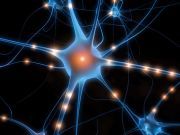Article
Prion-like Protein Linked to Neurodegenerative Disorders
Author(s):
The behavior of a particular prion-like protein is associated with Alzheimer's disease (AD) and several other neurodegenerative disorders.

The behavior of a particular prion-like protein is associated with Alzheimer’s disease (AD) and several other neurodegenerative disorders, according to a study published online May 22, 2014, in Neuron.
For their research, investigators from the Washington University School of Medicine in St. Louis isolated tau stains in 29 deceased patients with 5 different neurodegenerative diseases, each of which was found to have a distinct tau prion strain or combination of strains.
The researchers discovered that tau could be manipulated in different manners, creating strains that were linked to distinct damage to the brain. Additionally, they found the reintroduction of the strain produced identical clones within cells.
The investigators asserted that tau proteins behave similar to prions. Although they are not alive, prions interact with normal proteins, which then clump and transfer to other cells in a behavior that is comparable to viruses or bacterium.
In addition to AD, the researchers found the prion-like tau protein was linked to many other neurodegenerative conditions, including corticobasal degeneration and Pick’s disease. Their new findings supported their previous research conducted in 2009, which observed tau’s ability to transform itself.
“When we infected a cell with one of these misshapen copies of tau and allowed the cell to reproduce, the daughter cells contained copies of tau misfolded in the same fashion as the parent cell,” senior author Marc Diamond, MD, described in a statement. “Further, if we extracted the tau from an affected cell, we could reintroduce it to a naïve cell, where it would recreate the same aggregate shape. This proves that each of these differently shaped copies of the tau protein can form stable prion strains, like a virus or a bacteria, that can be passed on indefinitely.”
Based on the newly discovered behavior of the tau protein, the investigators concluded more effective treatment could be administered in patients with AD and other neurodegenerative disorders.
“If we think of these different tau strains as different pathogens, then we can begin to describe many human disorders linked to tau based on the strains that underlie them,” Diamond said. “This may mean that certain antibodies or drugs, for example, will work better against certain disorders than others.”





